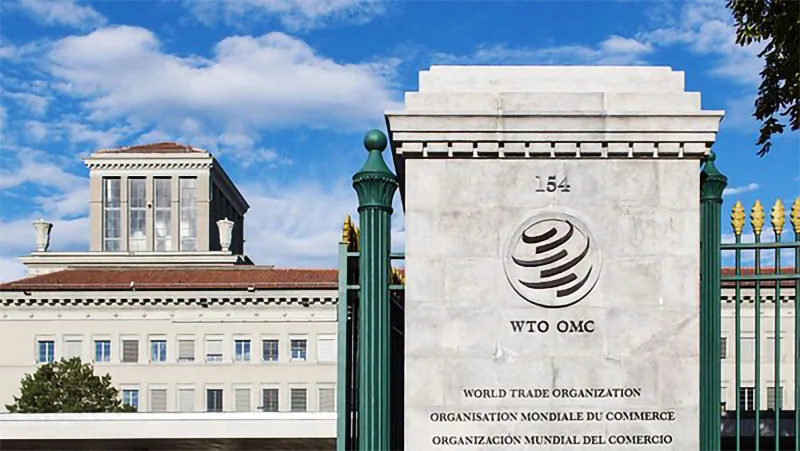(Continued from yesterday) Critique of the International Trade System President Trump’s tariffs have also highlighted fundamental inequities in the international trade and financial architecture that governs economic relations between wealthy and developing nations. The World Trade Organization, theoretically designed to provide a rules-based trading system that benefits all members, has proven largely powerless to prevent unilateral actions by powerful economies like the United States. While China has urged the WTO to investigate President Trump’s tariffs as violations of the “most favoured nation” principle that forms the bedrock of the multilateral trading system, the organization lacks effective enforcement mechanisms against major powers.
Similarly, international financial institutions like the IMF have failed to adequately account for trade shocks in their lending programmes and debt sustainability analyses. As discussed earlier, the IMF’s approach to Sri Lanka’s debt restructuring focused primarily on fiscal consolidation while paying insufficient attention to the country’s Page 17 of 29 structural trade deficit and vulnerability to external shocks. When Trump’s tariffs suddenly reduce Sri Lanka’s export earnings, the IMF program offers no automatic adjustment mechanisms to accommodate this changed reality.

This situation stands in stark contrast to historical examples of more equitable treatment of indebted nations. The London Debt Agreement of 1953, which restructured West Germany’s external debts, explicitly linked repayment obligations to the country’s trade performance and capped debt service at a sustainable percentage of export earnings. Such an approach recognised the fundamental importance of trade capacity to debt sustainability, a recognition largely absent from contemporary debt restructuring frameworks.
The tariff shock thus reveals not merely technical flaws in trade policy but deeper structural inequities in how the global economic system distributes risks, rewards, and adjustment costs between wealthy and developing nations. While powerful economies can unilaterally reshape trading relationships to serve their domestic political objectives, developing countries must largely accept these changes as given constraints and bear disproportionate costs of adjustment. Potential Reshaping of Global Trade Patterns Looking beyond the immediate disruption, President Trump’s tariffs may accelerate several longer-term shifts in global trade patterns with significant implications for developing economies.
First, we may see accelerated regionalisation of trade as countries seek to reduce vulnerability to U.S. policy shifts.
Asian economies may deepen integration through mechanisms like the Regional Comprehensive Economic Partnership (RCEP), while African countries might accelerate the implementation of the African Continental Free Trade Area (AfCFTA). These regional arrangements could provide alternative markets for exports previously destined for the United States, though the transition would be neither quick nor painless. Second, China’s role as both a market and investor for developing economies may expand further.
As U.S. tariffs effectively close off portions of its market, developing countries may look more intensively toward China as an export destination and source of development finance.
This shift would have significant geopolitical implications, potentially accelerating the fragmentation of the global economy into competing blocs centred around major powers. Page 18 of 29 Third, some production may relocate to avoid tariffs, creating winners and losers among developing countries. Nations with lower tariff rates or special exemptions could see increased investment as firms restructure supply chains to minimise trade costs.
This dynamic could intensify competition among developing countries for foreign investment, potentially triggering a “race to the bottom” on labour and environmental standards. Fourth, there may be renewed interest in domestic market development and South-South trade as alternatives to excessive dependence on wealthy consumer markets. While the limited purchasing power in many developing countries constrains this option in the short term, over time it could lead to more balanced and resilient development models.
These potential shifts suggest that President Trump’s tariffs may represent not merely a temporary disruption but a catalyst for more fundamental reconfiguration of global trade patterns. For developing economies like Sri Lanka, navigating this changing landscape will require strategic foresight, policy innovation, and international cooperation to ensure that the emerging trade architecture better serves their development needs than the system currently being disrupted. POTENTIAL MITIGATION STRATEGIES FOR SRI LANKA Faced with the severe economic challenge posed by Trump’s 44% tariff, Sri Lanka must develop a comprehensive response strategy that addresses both immediate threats and longer-term structural vulnerabilities.
This section explores potential approaches at different time horizons, from emergency measures to fundamental economic reorientation. Short-term Responses In the immediate term, Sri Lanka’s government and private sector must focus on crisis management to minimise damage to export industries and protect vulnerable workers. Several approaches warrant consideration.
Government Support for Affected Industries The Sri Lankan government could implement targeted support measures for export sectors most affected by the tariffs, particularly the textile and apparel industry. These might include temporary tax relief, subsidised credit facilities, or reduced Page 19 of 29 utility rates for export-oriented manufacturers. Such measures could help companies weather the initial shock while they develop adaptation strategies.
However, Sri Lanka’s fiscal constraints present a significant challenge to implementing such support. The country’s IMF programme imposes strict limits on government spending and deficit targets, while tax increases have been a central component of the economic stabilisation strategy. Any support measures would therefore need to be carefully designed to remain within these constraints or negotiated as exceptions with the IMF based on the external nature of the shock.
One potential approach would be to reallocate existing resources rather than expanding overall spending. For instance, funds previously earmarked for export promotion in the U.S.
market, if any, could be redirected toward supporting market diversification efforts or providing temporary relief to affected companies. Diplomatic Engagement with the United States Sri Lanka should pursue active diplomatic engagement with the United States to seek modifications to the tariff regime. While the country’s limited economic leverage makes a complete exemption unlikely, there may be opportunities to negotiate targeted relief for specific product categories or to secure technical assistance for adjustment.
The Sri Lankan government could emphasise several arguments in these discussions, the disproportionate impact of the tariffs on a country still recovering from economic crisis, the potential humanitarian consequences of mass unemployment in the textile sector, and the strategic importance of economic stability in Sri Lanka for regional security in the Indian Ocean. One of the most compelling arguments Sri Lanka can make is the need to move beyond narrow fixation on the trade balance and instead consider a broader current account. While Sri Lanka may show a surplus in goods trade with the U.
S., that figure is only a part of the story. Our economy is deeply integrated with U.
S. linked services. We pay for American banking and credit card services, subscribe to streaming platforms like Netflix and Amazon, purchase of software and apps from Apple and Google, remit interest payment on loans from international banks, bond holders and multilateral institutions, and spend on tourism and education.
When all of these outflows are taken into account, the so called “imbalance” is far more nuanced if not fully offset. This is why a fair and modern economic analysist must consider the full current account, not just goods trade in isolation. Page 20 of 29 Engagement should occur through multiple channels, including direct bilateral discussions, multilateral forums like the WTO, and coordination with other affected developing countries to amplify collective concerns.
Sri Lanka might also leverage its relationships with international financial institutions like the World Bank and IMF, which could highlight the risks the tariffs pose to the country’s economic recovery program. Emergency Economic Measures If the full impact of the tariffs materializes, Sri Lanka may need to implement emergency economic measures to maintain macroeconomic stability. These could include temporary foreign exchange controls to prioritize essential imports, accelerated disbursement of already-committed international financial support, or emergency borrowing from friendly countries or international institutions.
The Central Bank of Sri Lanka might need to adjust monetary policy to respond to potential currency pressures resulting from reduced export earnings. However, any such adjustments would need to be balanced against inflation concerns, which remain sensitive following the recent crisis. Social Protection for Affected Workers Protecting workers who lose jobs or face reduced hours due to the tariff impact should be a priority.
The government could expand existing social safety net programs to specifically target affected textile workers, potentially with support from international donors or development agencies. Measures might include temporary unemployment benefits, retraining programmess for displaced workers, or community-based support initiatives in areas with high concentrations of textile employment. Given fiscal constraints, international support would likely be necessary to fund such programmes adequately.
Medium to Long-term Strategies Beyond immediate crisis response, Sri Lanka must develop strategies to reduce vulnerability to future trade shocks and create a more resilient economic model. Several approaches deserve consideration. Page 21 of 29 Market Diversification Beyond the United States Reducing dependence on the U.
S. market represents an obvious but challenging strategy. Potential alternative markets include, * European Union: Already Sri Lanka’s second-largest export destination, the EU offers preferential access through its GSP+ scheme.
Expanding exports to Europe would require meeting stringent standards and potentially adjusting product offerings to suit European consumer preferences. * Regional Markets: Increasing exports to India, China, and other Asian economies could leverage geographical proximity and growing middle-class consumer bases. This would require navigating complex regional trade agreements and potentially developing new product categories better suited to these markets.
* Emerging Markets: Countries in the Middle East, Africa, and Latin America represent potential growth opportunities, though penetrating these markets would require significant market research and relationship building. The Joint Apparel Association Forum’s statement that “We have no alternate market that we can possibly target instead of the US” reflects the difficulty of this transition. Established buyer relationships, specialized production capabilities, and compliance certifications all create path dependencies that make market diversification a multi-year project rather than an immediate solution.
Product Diversification Beyond Textiles Sri Lanka’s heavy reliance on textile and apparel exports creates vulnerability to sector-specific shocks. Diversifying the export basket could create greater resilience, though this too represents a long-term structural challenge rather than a quick fix. Promising sectors for export diversification include: * Information Technology and Business Process Outsourcing: Sri Lanka has developed a growing IT/BPO sector that could be expanded with appropriate investment in education, infrastructure, and international marketing.
* High-Value Agricultural Products: Speciality tea, spices, and organic produce could command premium prices in international markets while building on Sri Lanka’s agricultural traditions. Page 22 of 29 Sustainable Manufacturing: Leveraging Sri Lanka’s relatively strong environmental credentials to develop green manufacturing capabilities in emerging sectors like electric vehicle components or renewable energy equipment. Tourism Services: While not directly affected by goods tariffs, expanding tourism could help diversify foreign exchange earnings.
However, this sector’s vulnerability to external shocks (as demonstrated during the pandemic) suggests it should be one component of a diversification strategy rather than its centrepiece. Successful product diversification would require coordinated public-private investment in research and development, skills training, quality infrastructure, and international marketing. It would also necessitate a supportive policy environment that reduces barriers to innovation and entrepreneurship.
Value Chain Upgrading Even within existing export sectors like textiles, Sri Lanka could pursue strategies to capture more value and reduce vulnerability to tariffs. Moving up the value chain from basic contract manufacturing to design, product development, branding, and direct-to-consumer sales could increase margins and provide greater control over market access. Some Sri Lankan companies have already begun this transition, developing their own brands or establishing direct relationships with consumers through e-commerce platforms.
Government support for such initiatives through design education, intellectual property protection, and export promotion could accelerate this evolution. Regional Trade Integration Deepening integration with regional trade blocs could provide both alternative markets and opportunities for participation in regional value chains. Sri Lanka is a member of the South Asian Free Trade Area (SAFTA) and has bilateral trade agreements with India, Pakistan, and Singapore, and more recently with Thailand, though implementation challenges have limited their effectiveness.
More ambitious regional integration through mechanisms like the Regional Comprehensive Economic Partnership (RCEP) or the proposed Bay of Bengal Initiative for Multi-Sectoral Technical and Economic Cooperation (BIMSTEC) Free Page 23 of 29 Trade Area could create new opportunities. However, managing domestic concerns about increased competition from larger economies like India and China would require careful policy design and implementation. (To be continued) (The writer served as the Minister of Justice, Finance and Foreign Affairs of Sri Lanka) Disclaimer: This article contains projections and scenario-based analysis based on current economic trends, policy statements, and historical behaviour patterns.
While every effort has been made to ensure factual accuracy using publicly available data and established economic models, certain details, particularly regarding future policy decisions and their impacts, remain hypothetical. These projections are intended to inform discussion and analysis, not to predict outcomes with certainty. (To be concluded).
Politics

Trump tariffs and their effect on world trade and economy with particular reference to Sri Lanka – Part IV

(Continued from yesterday) Critique of the International Trade System President Trump’s tariffs have also highlighted fundamental inequities in the international trade and financial architecture that governs economic relations between wealthy and developing nations. The World Trade Organization, theoretically designed to provide a rules-based trading system that benefits all members, has proven largely powerless to prevent [...]















